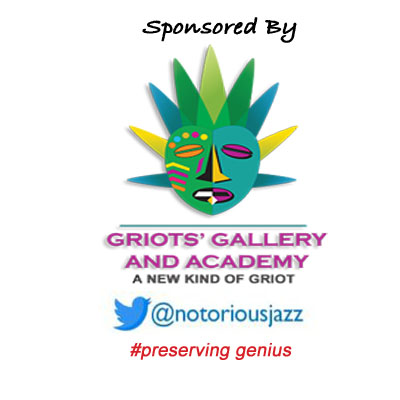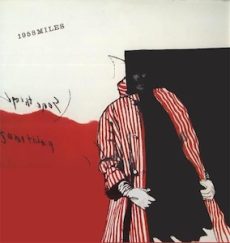
Requisites
1958 Miles ~ Miles Davis | By Eddie Carter
Throughout his career, Miles Davis was widely regarded not only as a leading figure in jazz but as a monumental presence in music as a whole. He consistently demonstrated his influence by producing an impressive array of records that have remained influential over the years, offering critics, listeners, and fellow musicians more to consider and appreciate than most artists across any musical style. This morning’s album up for discussion is 1958 Miles (CBS/Sony 20AP 1401). Interestingly, this record did not see a complete release in Japan until 1974. Tracks: A1 to A3 were initially released on “Jazz Track” in 1958. Track B1 later appeared on the 1975 double album “Black Giants, ”while track B2 appeared twice in 1973, on the compilations “Basic Miles—The Classic Performances of Miles Davis” and the CBS/Sony Japanese release “The Miles Davis Quintet & Sextet.”
By the time he recorded this album, Davis had brought in some new talented musicians to his group. Red Garland and “Philly” Joe Jones had left, and in their places, pianist Bill Evans and drummer Jimmy Cobb joined the band. Rounding out the ensemble are Julian “Cannonball” Adderley on alto sax (tracks: A1, A2, B1), John Coltrane on tenor saxophone (tracks: A1 to B2), Bill Evans (tracks: A1 to A3, B1), and Red Garland on piano (track: B2). On bass, Paul Chambers is featured on track B2, while Jimmy Cobb (tracks: A1 to A3, B1) and “Philly” Joe Jones (track: B2) keep the rhythm going on drums. The copy of the album I used for this report is the 1979 Japanese Mono Reissue.
Side One kicks off with the timeless song On Green Dolphin Street by Bronislaw Kaper and Ned Washington.Initially written for the 1947 film “Green Dolphin Street”, it’s Miles Davis’s version that truly made it a jazz standard we cherish today. He starts his soulful dialogue on the muted horn, with the trio providing a relaxed, friendly groove around the melody. His energetic lead solo radiates positive vibes, sizzling at a comfortable medium heat, while Coltrane responds with a lively, lyrical interpretation. Cannonball adds his beautiful touch on the third reading, and Evans plays just as wonderfully, culminating in a joyful moment before Miles wraps up the song with a satisfying finish.
Fran-Dance is a heartfelt tribute from Miles to his second wife, Frances Taylor. I first heard this beautiful tune on the 1961 live album, “Miles Davis In Person, Saturday Night at The Blackhawk, San Francisco, Volume 2.” Miles, playing a gently muted trumpet, creates a beautifully dreamy theme that feels warm and inviting, ending with a rich, mellow note. Coltrane’s opening is so lush that it feels like it melts right into your heart. Cannonball's tender, slightly fragile tone adds a delicate touch to the next performance, and Evans approaches the finale with such fingertip delicacy that it becomes one of his most touching ballad performances.
The 1944 jazz classic Stella By Starlight, by Victor Young with lyrics by Ned Washington, provides a graceful ending to the album’s first side and stands as a cherished staple of The Great American Songbook. Cannonball takes a reflective moment to appreciate this enduring masterpiece, highlighting the remarkable solos by Miles, Coltrane, and Evans. The enchanting atmosphere is set immediately with the opening chorus, as the muted trumpet conveys each phrase with deep emotion. Coltrane delivers a powerful, regal rendition, seamlessly leading into Evans’ exquisite solo, which builds to a memorable climax.
Love For Sale, by Cole Porter, made its first appearance in the 1930 musical “The New Yorkers.” The song’s lyrics paint a vivid image of a streetwise woman offering love for purchase, and it has become one of Porter’s most frequently covered songs. Notably, Cannonball and Miles recorded their own rendition just two months earlier for the 1958 album “Somethin’ Else.” Miles opens with a brisk, upbeat introduction, playing with a mute and delivering a truly memorable highlight. Following that, Cannonball takes over and shines brilliantly. Evans then immerses himself in the closing statement, providing a remarkable performance before the group’s theme reprise concludes.
Jackie McLean’s composition Little Melonae made its debut on his 1955 album, “Presenting Jackie McLean”, and is dedicated to his daughter. Cannonball Adderley also doesn’t perform on this track. The quintet introduces the tune with a unified statement of the melody, followed by a captivating solo from Miles Davis, who opens with the mute off, adding a striking touch. John Coltrane responds with heartfelt sincerity in the following statement. Red Garland impresses with refined technique and elegance on his only appearance on the album. Paul Chambers briefly steps into the spotlight, after which the quintet brings the song to a close together.
Teo Macero produced the album, and Larry Keyes carefully engineered each recording session. The sound quality is absolutely stunning across all ranges—treble, midrange, and bass—creating a rich, immersive experience. The sextet’s performance surrounds your favorite listening spot with a beautifully solid soundstage from the instruments, making every note feel alive. Since this is a Japanese release, 1958 Miles might be a bit tricky to track down on your next vinyl hunt. But with a little patience, you’ll be rewarded with an extraordinary album that would make an excellent addition to the Hard-Bop section of your library. It also offers a fresh perspective on Miles Davis’s sound in the Modal style, which reached its peak a year later with “Kind of Blue!”
~ Basic Miles-The Classic Performances of Miles Davis (Columbia KC 32025); Black Giants (Columbia KG 33402); Jazz Track (Columbia CL 1268); Kind of Blue (Columbia CL 1355/CS 8163); Miles Davis In Person, Saturday Night at The Blackhawk, San Francisco, Volume 2 (Columbia CL 1670/CS 8470); Presenting Jackie McLean (AdLib 6601); Somethin’ Else (Blue Note BLP 1595/BST 81595); The Miles Davis Quintet & Sextet (CBS/Sony SOPM-140) – Source: Discogs.com
~ On Green Dolphin Street, Love For Sale – Source: JazzStandards.com
© 2025 by Edward Thomas Carter
More Posts: choice,classic,collectible,collector,history,instrumental,jazz,music,trumpet
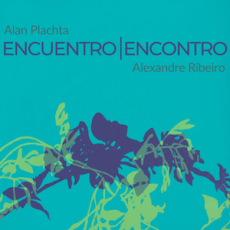
Daily Dose Of Jazz…
Alan Plachta was born on November 30, 1981 and raised in Buenos Aires, Argentina. Recently recorded in NYC his last album “Un viaje” in collaboration with Richard Nant, featuring Luis Perdomo on piano, Sam Sadigursky on reeds, Satoshi Takeishi on drums and Matt Pavolka on bass.
As a composer, arranger and conductor he has worked with the Boris Big Band, Orquesta Sudamericana, Kai de Raiz, and Orquesta de Cuerdas Elvino Vardado in collaboration with Juan Pollo Raffo.
Alan has played and/or recorded with numerous South American musicians such as Roberto Taufic, Hugo Fattoruso, Urbano Moraes, Daniel Maza, Robert Vincs, Alex & Nilusha, Alexandre Ribeiro, Ana Luiza and Luis Felipe Gama, Nicolás Ospina, Celeste Carballo, Ligia Piro, Liliana Herrero, and Cecilia Pahl among others.
A leader or co-leader, he has recorded five albums, the first in 2005. A prolific arranger and producer Nussbaum has collaborated as guitarist and guest arranger for Cambrio de Estacion, Roma, Soy Una Tarada, Desmesura, Este Tiempo, Ensamble Real Book Argentina, and Y De Amor No Supe Nada.
As a guitarist he has recorded ninetten albums and his compositions are included in Real Book Argentina. His educator role has Adam teaching ear training, arrangement, harmony and guitar. He is in charge of the Musical Language´s Technichs at the Tecnólogo en Jazz y Música Creativa career at UTEC.
Guitarist, composer, arranger and educator Alan Plachta continues to explore his music and his teaching.
More Posts: arranger,bandleader,composer,educator,guitar,history,instrumental,jazz,music
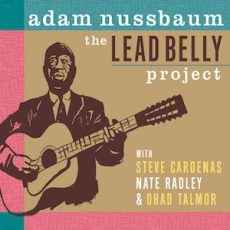
Daily Dose Of Jazz…
Adam Nussbaum was born in New York City on November 29, 1955 and grew up in Norwalk, Connecticut. He first played the drums at the age of four, however, it wasn’t until after five years of piano study that he got his first drum set when he was around twelve. He went on to study music at the City College of New York, during which time he also played in local clubs.
1978 saw Adam joining Dave Liebman’s quintet and did his first European tour with John Scofield. He played with saxophonist Stan Getz for a year in 1982. The following year he became a member of the Gil Evans Orchestra, and toured Europe and Japan two years later.
Joining the Eliane Elias/Randy Brecker Quartet, Gary Burton, and Toots Thielemans, by 1987 he began touring with Michael Brecker’s band. He was a member of Brecker’s Grammy award-winning album. Don’t Try This At Home. In 1991 John Abercrombie hired Nussbaum to complete his organ trio and during 1992 Nussbaum was part of the Carla Bley Big Band.
He has kept active in a wide variety of groups and as a freelancer. His quartet recording debut as leader in 2018 was The Lead Belly Project, released on Sunnyside Records.
Drummer Adam Nussbaum continues to perform and record.
More Posts: bandleader,drums,history,instrumental,jazz,music
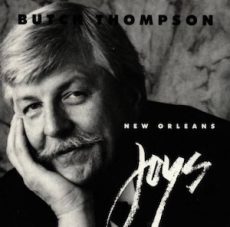
Daily Dose Of Jazz…
Richard Enos “Butch” Thompson was born on November 28, 1943 in St. Croix, Minnesota, began playing piano at the early age of three, and began taking lessons at age six. At Stillwater Area High School, he played clarinet in the band and in 1962 he joined the Hall Brothers New Orleans Jazz Band in Minneapolis, Minnesota and remained with them for twenty years.
>From 1974 to 1986, he was a regular and the original pianist on the radio show A Prairie Home Companion. From its inception in the 1960s he led the Butch Thompson Trio.
The 1970s saw Thompson’s recordings gaining popularity in Europe and he toured the continent extensively during the decade and into the 1980s, both as a solo artist and as a band leader or member.
He wrote for jazz publications and produced a radio show, Jazz Originals, for KBEM-FM in Minneapolis. Pianist and clarinetist Butch Thompson, best known for his ragtime and stride performances, died on August 14, 2022.
More Posts: bandleader,clarinet,history,instrumental,jazz,music,piano
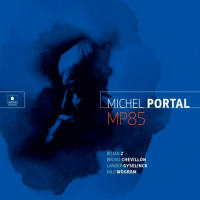
Daily Dose Of Jazz…
Michel Portal was born on November 27, 1935 in Bayonne, France into a musical family and home filled with several instruments growing up. His interest in jazz began after hearing it on the radio after World War II. He studied clarinet at the Conservatoire de Paris and conducting with Pierre Dervaux.
Gaining experience in light music with the bandleaders Henri Rossotti and with Perez Prado in Spain in 1958, Michel performed with drummer Benny Bennett, Raymond Fonsèque, Aimé Barelli and for many years, the singer Claude Nougaro.
Portal co-founded the free improvisation group New Phonic Art. During 1969, he played on a recording of Karlheinz Stockhausen’s Aus den sieben Tagen.
He began scoring music for films in the 1980s. He won the César Award for Best Music Written for a Film three times. Playing both jazz and classical music and is considered to be “one of the architects of modern European jazz.
Composer, saxophonist, and clarinetist Michel Portal continues to perform and record.
More Posts: bandleader,clarinet,composer,history,instrumental,jazz,music,saxophone



